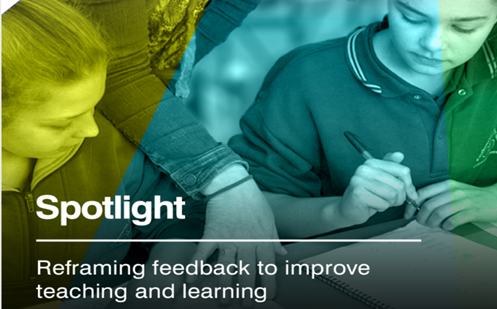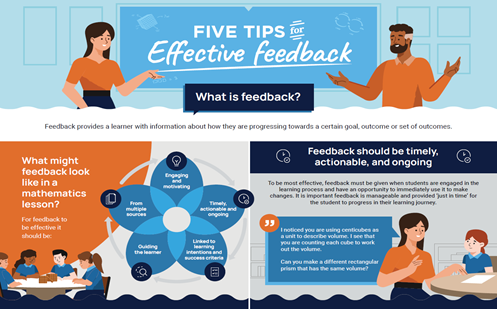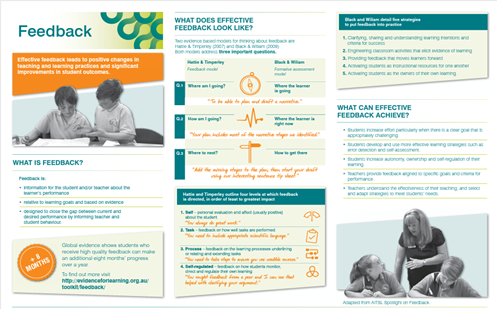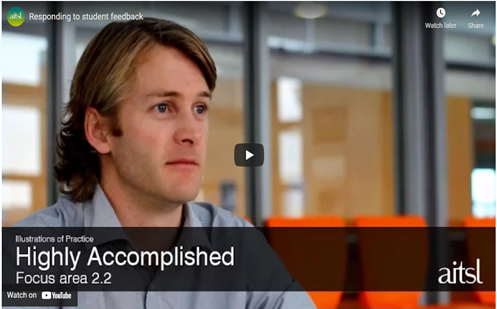Feedback
Overview
There are many different types of feedback that can be given to students. It has been shown that good feedback can make a significant difference to a student’s future performance.
The type of feedback depends on the assessment process used.
- Formative assessment – as the students are learning, the teacher is monitoring and giving specific feedback. Teachers should then be adjusting their questioning and the activities based on their formative assessment observations.
- Summative assessment – the traditional pre- or post-test with a grade/number attached. These can then be used to inform future teaching, for example, to decide if there is a need to reteach a concept. They are also used for reporting.
- Diagnostic assessment – a test or set of questions designed to discover what students already know and what misconceptions they hold. This will inform what the teacher goes on to teach.
To be effective, feedback should be:
- timely – not too long after the piece of work was done so that it is still relevant
- constructive/informative – not just a grade (often only a comment), and comments that enable the student to implement changes that will improve future pieces of work
- specific to the task and related to the learning outcomes or success criteria
- not just praise – this can be negative as the student can become complacent
- detailed – students need to know what was good and what needs improvement
- positively worded and non-judgemental
- given sparingly so that it is meaningful.
Feedback can be given in a variety of ways:
- Verbally – in response to a question in class.
- Written – as a comment on a piece of work or test. In mathematics it is important that the feedback is more than just a number/grade or ticks and crosses. Comments should be informative and direct the students as to how they can make improvements to their future performance.
- Through technology – for example, leaving a comment (voice note, written or video) on work handed in electronically.
The teacher:
- provides timely, specific and useful feedback to students
- uses feedback to illustrate to students how they can move forward and improve their work
- gives feedback in multiple formats, for example, verbal, written, electronic
- shows students how to give respectful feedback to each other and how to self-assess
- uses assessment and feedback data to inform future teaching and learning activities.
The students:
- use feedback to improve their work
- give and receive peer feedback respectfully
- acknowledge and respond to the feedback they receive.
Examples of the strategy in action

Reframing feedback to improve teaching and learning
This resource provides detail on the different types of feedback and how they can be used to improve student outcomes.

Five tips for Effective feedback
Use this infographic for examples of ways to include feedback to improve student learning in mathematics.

Infographic: Feedback
This infographic describes effective feedback and highlights ways it can lead to significant improvements in student outcomes.

Responding to student feedback
In this video, a teacher explains how they used feedback from students to improve their own practice.
